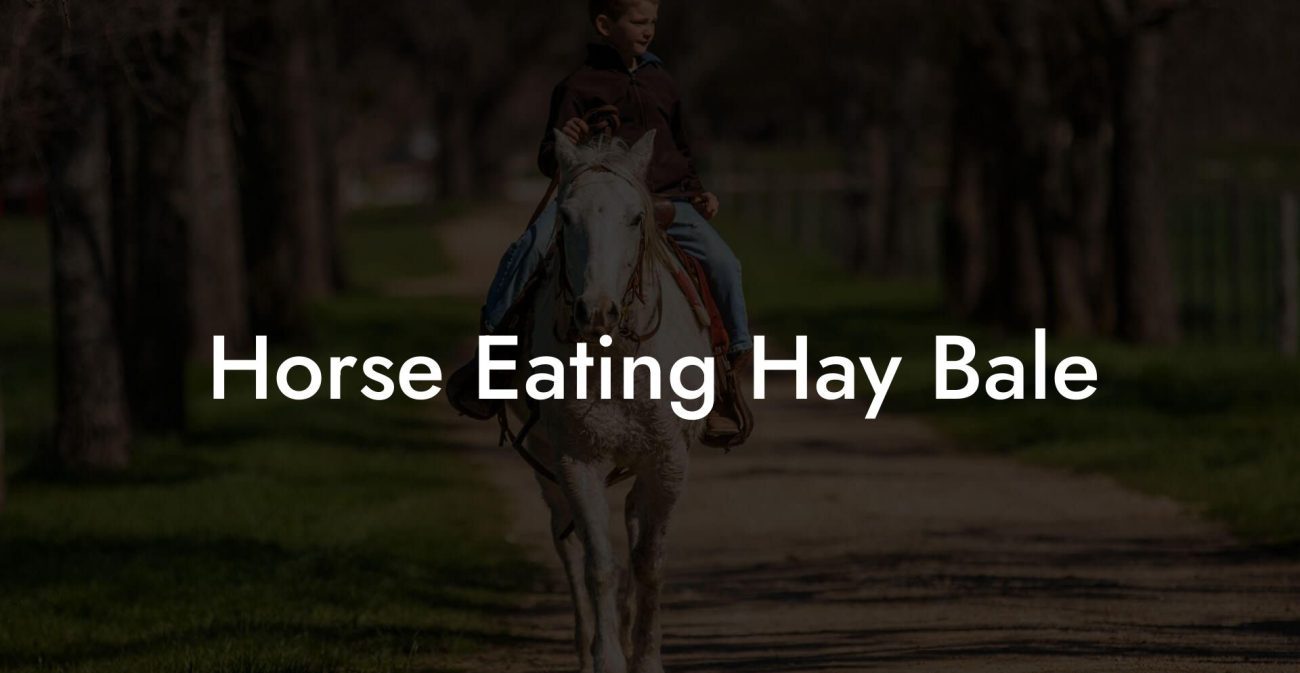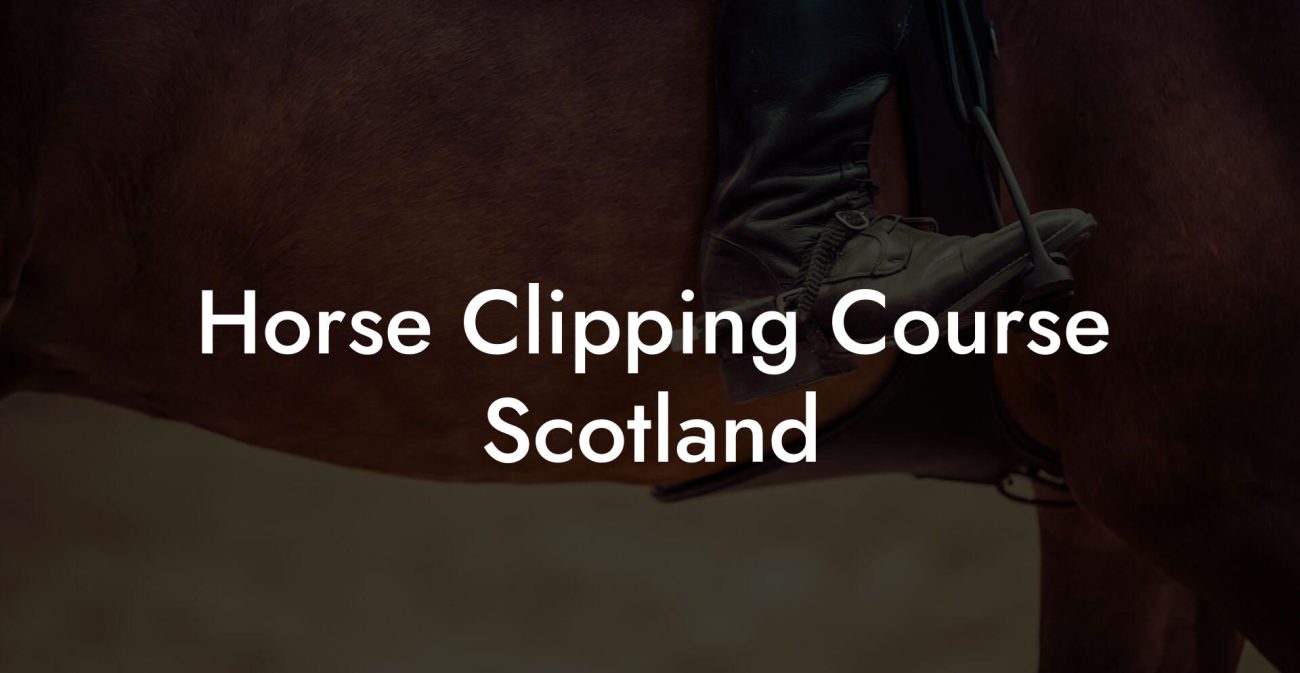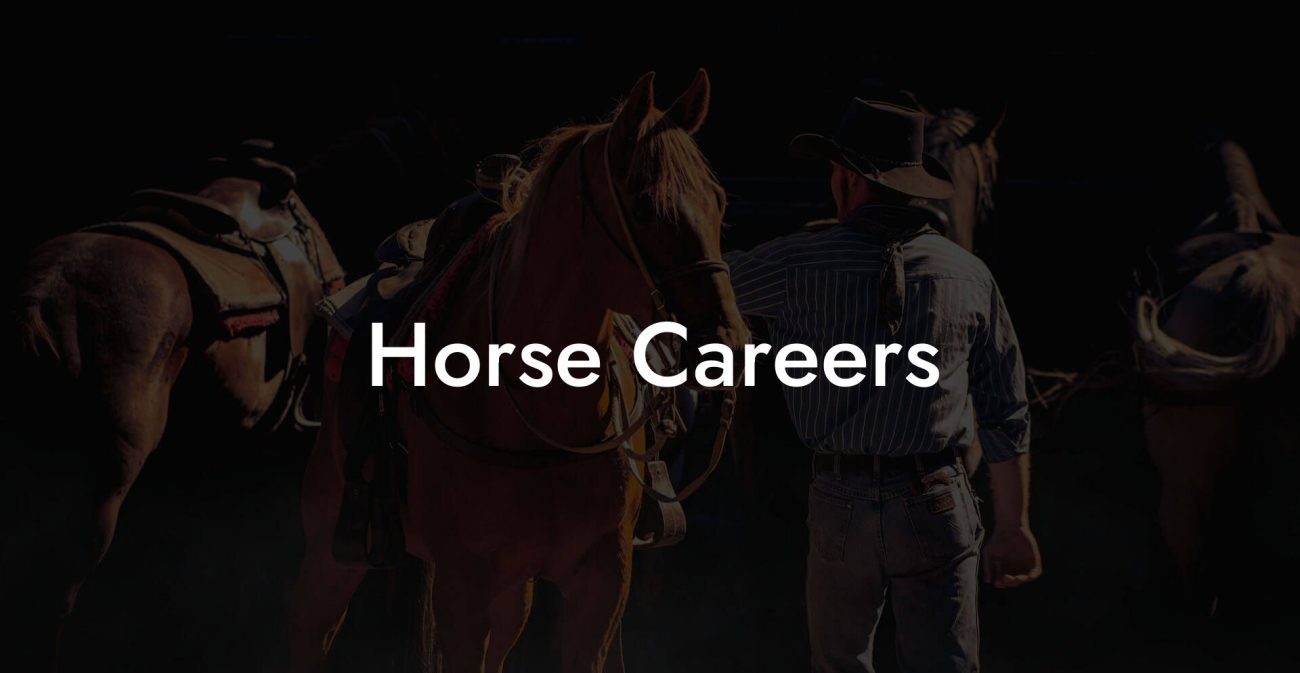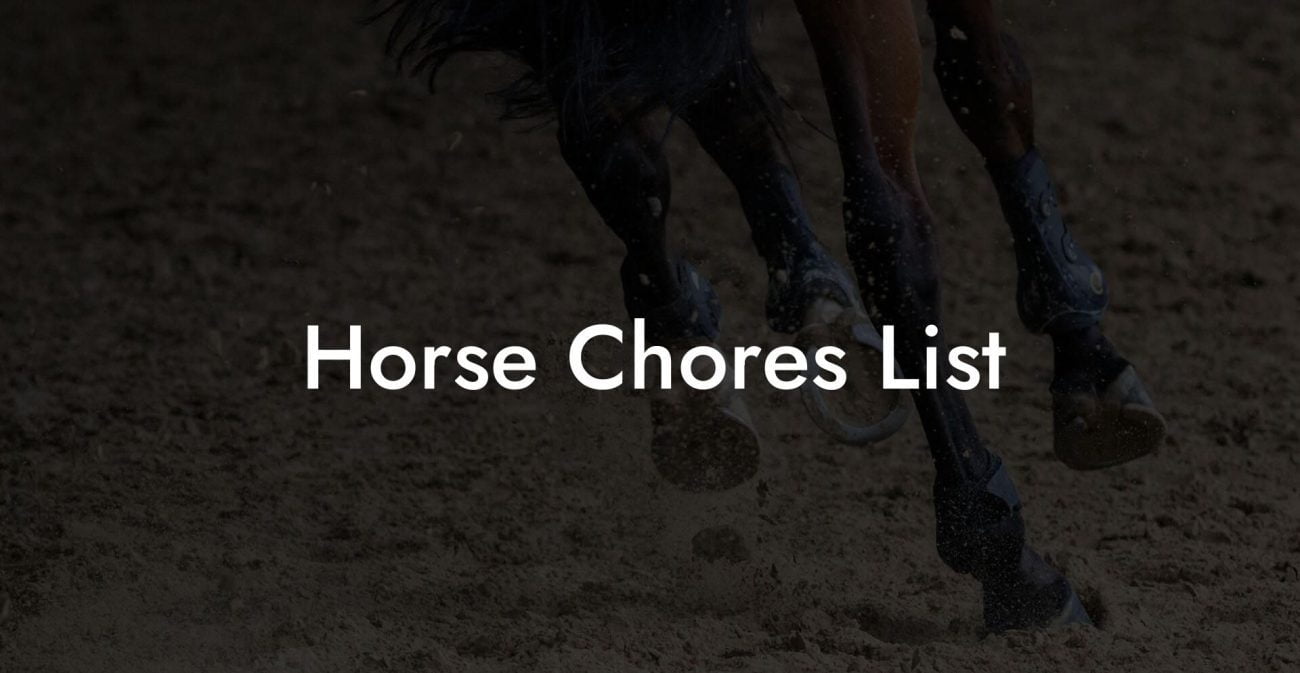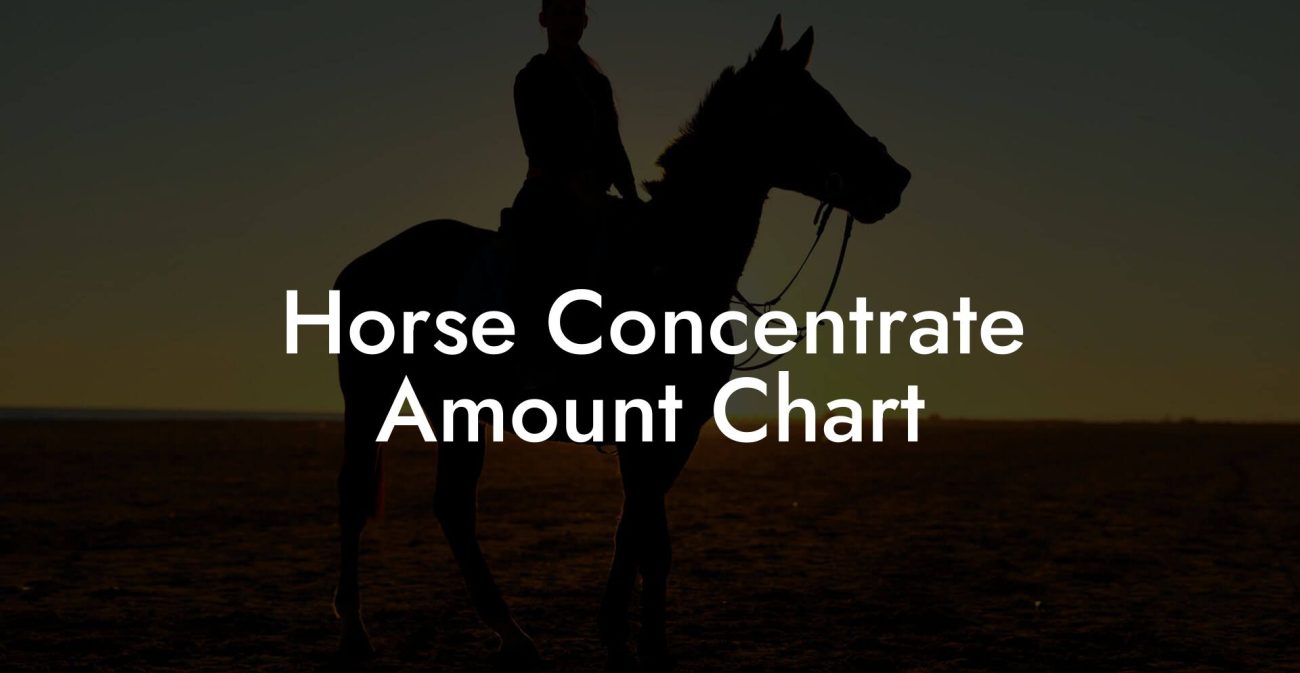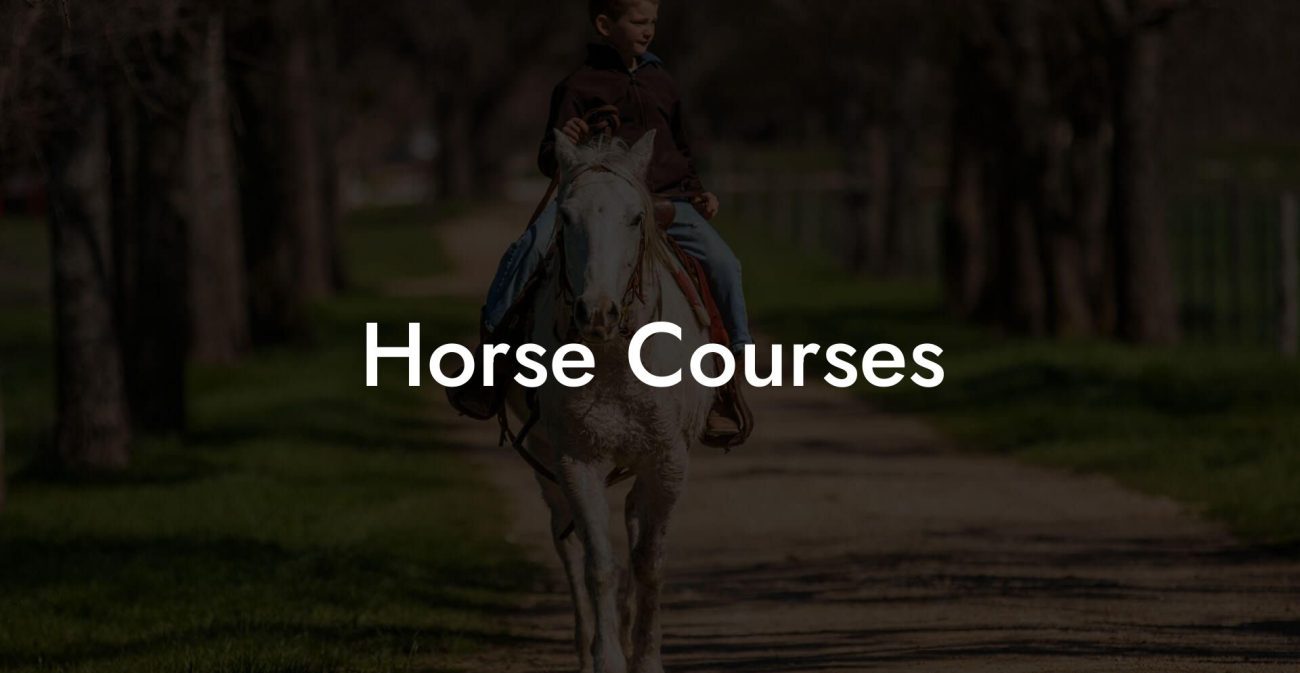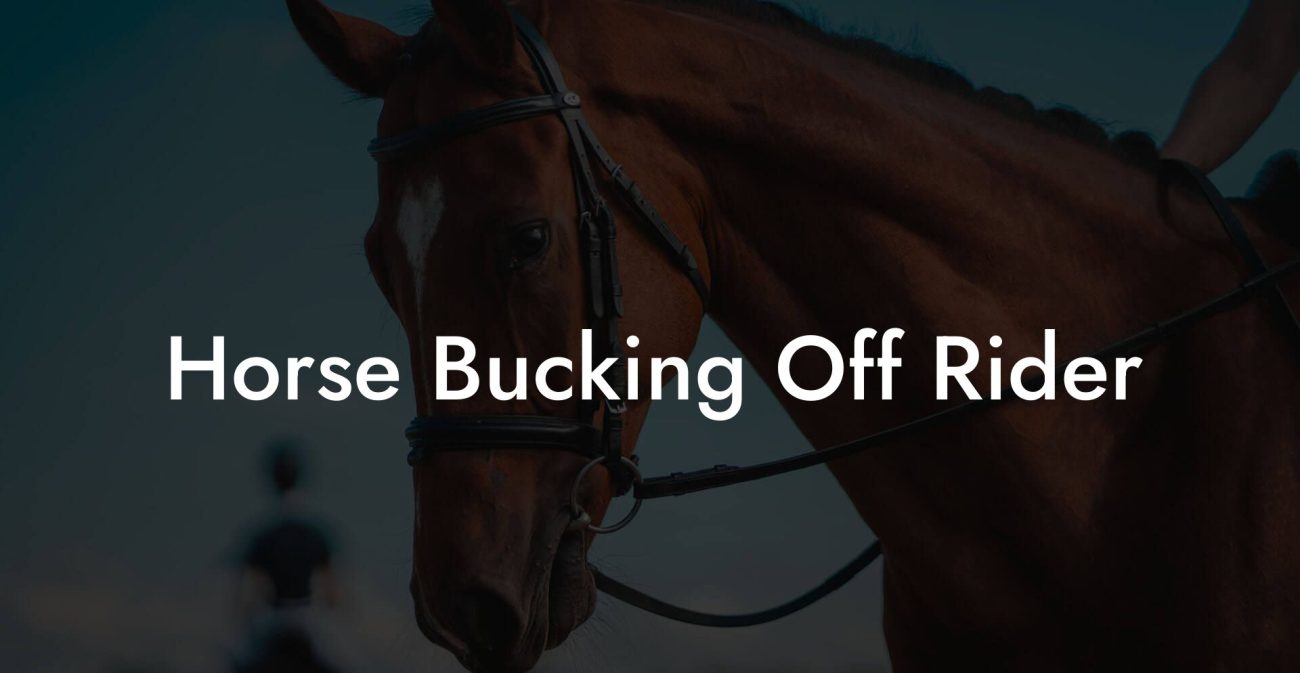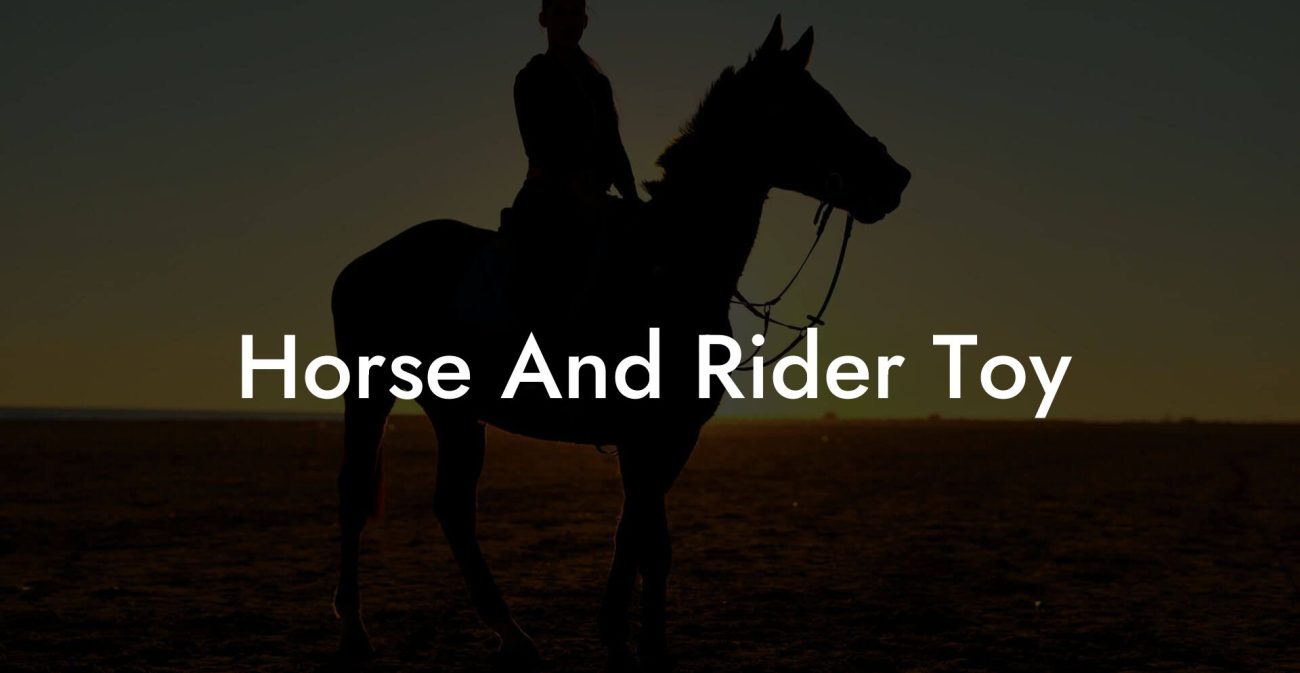Picture this: your horse is galloping down an open field with a grace that’s both raw and refined, and every pounding stride is powered by an unsung hero, the fetlock. This tiny joint, tucked neatly between the cannon bone and the pastern, acts like a shock absorber and power booster all rolled into one. Dive into the world of equine anatomy with us as we explore what a fetlock is, why it’s so essential for your horse’s performance and overall well-being, and how you, yes, you, the modern, savvy Gen-Z or millennial horse enthusiast, can care for it like a pro.
Quick Links to Useful Sections
- What Exactly Is a Fetlock on a Horse?
- Anatomy of the Fetlock Joint: The Marvel Within
- Bones and Joint Structure
- Ligaments and Tendons: The Dynamic Duo
- Cartilage and Synovial Fluid: The Unsung Protectors
- The Role of the Fetlock in Equine Movement
- Shock Absorption: Nature’s Built-in Cushion
- Energy Storage and Release
- Joint Stability and Flexibility
- Common Fetlock Injuries and Their Impact
- Sprains and Strains
- Joint Inflammation (Synovitis)
- Osteoarthritis
- Impact Fractures and Bone Injuries
- Maintaining Fetlock Health: Preventive Care and Best Practices
- Proper Hoof Care and Shoeing
- Balanced Exercise Regimes
- nutrition and Joint Supplements
- Regular Veterinary Check-Ups
- Innovative Approaches to Equine Joint Health
- Regenerative Therapies
- Advanced Rehabilitation Techniques
- Real Stories: When the Fetlock Stole the Show
- The Comeback Kid
- From the Racetrack to Recovery
- A Rider’s Wardrobe of Wellness
- Nutrition and Exercise: Fueling Joint Resilience
- Feeding for Flexibility and Strength
- Tailored Exercise Regimens
- Monitoring and Adjustments
- Resources and Community Support: Your Next Steps
- Fetlock FAQs: Your Equine Questions Answered
- Your Path to Superior Equine Joint Health Starts Here
What Exactly Is a Fetlock on a Horse?
At its core, the fetlock is a joint on a horse’s leg that often goes unnoticed until it starts acting up. Think of it as the equine equivalent of a high-performance shock absorber in a sports car. It sits at the junction where the cannon bone meets the pastern, playing a critical role in the animal’s biomechanics.
Whether you come from a long line of riders, are a weekend trailblazer, or are just starting out in the world of horses, understanding the function and structure of this joint can transform the way you care for your equine friend. In technical terms, the fetlock joint is a hinge joint that facilitates flexion and extension, allowing for efficient movement whether your ride is a leisurely trot or a high-octane race.
And here’s a fun fact: the fetlock joint isn’t actually a “foot” in the way we might expect, instead, it’s a sophisticated mechanism designed to absorb the impacts of heavy landings when your horse leaps over obstacles or sprints towards the finish line. So the next time you see those swift, light-footed gallops, give a nod to the fetlock for its behind-the-scenes heroics!
In our modern era where performance meets performance art, the fetlock is emerging as a focal point in equine care discussions, as it’s not just about speed, but also about longevity and health. For every millennial and Gen-Z rider leaning into ethical, sustainable horse care practices, understanding and nurturing every individual part of your horse’s anatomy, including the fetlock, is paramount.
Anatomy of the Fetlock Joint: The Marvel Within
Digging deeper into horse anatomy, the fetlock is a surprisingly intricate structure. It is composed of bones, cartilage, ligaments, tendons, and synovial fluid that work in sync to allow an incredible range of movement and support. Let’s break it down:
Bones and Joint Structure
The central components here are the cannon bone, the pastern, and a series of smaller bones that form the joint. This joint acts as a pivot, enabling your horse to extend its leg fully while absorbing the impact of each stride. Its design is not merely functional, it's refined evolution, tailored through centuries of adaptation for speed, endurance, and agility.
Ligaments and Tendons: The Dynamic Duo
Ligaments in the fetlock function like robust cables, holding the bones together while preventing hyperextension. Meanwhile, tendons, which connect muscle to bone, allow for smooth and responsive movement. In particular, the suspensory ligament, a critical structure in the fetlock, plays an essential role in stabilizing the joint during high-speed gallops and vigorous exercises.
The interplay between these ligaments and tendons is what makes the fetlock versatile and robust. They are designed to flex and recoil, much like a spring, which helps in reducing the shock transferred up the leg when your horse is in motion.
Cartilage and Synovial Fluid: The Unsung Protectors
Cushioning the bones and reducing friction within the joint is a smooth layer of cartilage, accompanied by synovial fluid, which acts as a lubricant. This dynamic duo ensures that every movement is fluid, minimizing wear and tear over time. For the modern horse owner, understanding the importance of maintaining the integrity of these components can be a game-changer in preventing injuries.
When you think about it, the anatomical design of the fetlock is nothing short of engineering genius, an elegant synergy of hard and soft tissues working in harmony to support some of the most powerful athletes on the planet.
The Role of the Fetlock in Equine Movement
The fetlock is much more than just a joint, it’s the powerhouse behind every bound, leap, and gallop your horse makes. Its primary role is to absorb and cushion the tremendous forces generated during movement. Here’s how it works:
Shock Absorption: Nature’s Built-in Cushion
Every time your horse takes to the ground, especially when galloping over uneven terrain, the fetlock joint flexes to absorb the impact. This shock-absorbing function is critical in protecting the rest of the limb from injury. The elasticity and resiliency of the fetlock are comparable to advanced automotive suspension systems, ever adaptive, constantly cushioning, and ingeniously efficient.
For riders and horse care enthusiasts alike, this means that proper care and maintenance of the fetlock are essential to prolonging your horse’s performance and preventing costly vet visits.
Energy Storage and Release
Beyond shock absorption, the fetlock plays an integral role in energy storage. As your horse’s leg compresses during movement, energy is stored much like in a coiled spring. When it rebounds, that energy is released, contributing to the power and efficiency of every stride. It's akin to your favorite pair of athletic sneakers that offer just the right bounce, except in this case, it’s a natural, finely-tuned mechanism in your horse.
This energy efficiency is what makes horses the incredible runners, jumpers, and performers they are, and why maintaining this joint’s integrity is crucial for both everyday riding and competitive events.
Joint Stability and Flexibility
The structural design of the fetlock ensures that it is both stable and flexible. This balance is what allows your horse to execute intricate maneuvers with precision. Whether your horse is breaking into a sprint or gracefully bending its leg during a jump, the fetlock is there providing the necessary support. When maintained appropriately, this remarkable balance allows for optimal performance and minimizes the risk of strain during rigorous activity.
In the fast-paced world of equine athletics, where every millisecond counts, the health of the fetlock can be the difference between a smooth ride and a painful injury.
Common Fetlock Injuries and Their Impact
Despite its robust design, the fetlock is susceptible to a range of injuries, particularly if it’s not properly cared for or overworked. Understanding these risks is the first step in prevention:
Sprains and Strains
Just like your favorite pair of sneakers can get worn out, so too can the ligaments and tendons of your horse’s fetlock if stressed beyond their capacity. Sprains occur when these ligaments are stretched too far or torn. They can arise from abrupt stops, hard surfaces during turnout, or unforeseen accidents. These injuries can be painful and may require an extended period of rest, coupled with professional care from an equine veterinarian.
Joint Inflammation (Synovitis)
Inflammation of the fetlock joint, often referred to as synovitis, is another common issue among active horses. It’s typically caused by repetitive strain, poor shoeing, or even an underlying infection. The resulting swelling, heat, and pain not only diminish your horse’s performance but can also signal deeper systemic issues that need addressing.
Osteoarthritis
Over time, especially in older horses or those with heavy workloads, the wear and tear on the fetlock can lead to osteoarthritis. This degenerative joint disease results in the gradual deterioration of cartilage, causing chronic pain and stiffness. Early detection and management through appropriate exercise, nutraceutical support, and veterinary interventions are key to slowing its progression.
Impact Fractures and Bone Injuries
Though less common, the fetlock can sustain fractures or microfractures during high-impact events like racing or jumping. These injuries require immediate veterinary attention, and prompt, careful rehabilitation is critical to prevent long-term damage.
When it comes to equine health, prevention is always better than cure. Recognizing the signs of a fetlock injury, from subtle changes in gait to obvious swelling, is essential. As the saying goes in the horse care community, “an ounce of prevention is worth a pound of cure.”
Maintaining Fetlock Health: Preventive Care and Best Practices
Now that we’ve dissected the anatomy and common issues of the fetlock, the next logical step is prevention. Whether you’re a casual rider or a competitive equestrian, keeping your horse’s fetlock in top shape is key to ensuring a long, healthy career.
Proper Hoof Care and Shoeing
The connection between hoof care and fetlock health cannot be overstated. A well-balanced, properly shod hoof distributes the forces evenly across the fetlock, reducing undue pressure on the joint. Regular visits from a trusted farrier not only keep the hooves in prime condition but also provide an opportunity to catch early signs of wear or injury in the fetlock.
For the modern horse owner, this means scheduling routine farrier appointments and asking questions about corrective shoeing options if your horse is prone to uneven wear or if you participate in high-impact sports like jumping or racing.
Balanced Exercise Regimes
Exercise is the lifeblood of a healthy horse, and a balanced regimen is crucial for joint maintenance. While it might be tempting to push for long hours of galloping or show jumping, moderation is key to avoiding overuse injuries. Mixing in periods of rest, alongside varied workouts that include low-impact exercises, helps minimize stress on the fetlock.
Incorporating activities such as swimming or trail riding on softer terrain can be an excellent way to build strength without overly stressing the joints. Additionally, dynamic stretching routines and proper warm-up protocols before intense activity go a long way in preserving joint integrity.
nutrition and Joint Supplements
Just as you wouldn’t starve your body of essential nutrients, your horse’s diet plays a pivotal role in maintaining joint health. High-quality feed, rich in anti-inflammatory elements and joint-support supplements such as glucosamine, chondroitin, and omega-3 fatty acids, can enhance the resiliency of the fetlock.
Modern equine nutrition has embraced the integrative approach, blending traditional feeds with scientifically formulated supplements specifically designed to support joint health. Always consult with an equine nutritionist or veterinarian to develop a dietary plan that addresses your horse’s unique needs.
Regular Veterinary Check-Ups
Prevention is a team sport, and your veterinarian is your ultimate ally in the care of your horse’s fetlock. Regular check-ups allow for the early detection of potential issues, whether it’s a subtle change in gait or the first signs of inflammation. Advanced imaging techniques, such as ultrasound or radiography, can provide invaluable insights into the joint’s condition, enabling targeted intervention before minor irritations escalate into major injuries.
By prioritizing routine veterinary visits, you'll not only extend the lifespan of your horse’s athletic prowess but also nurture a proactive, wellness-focused care routine that keeps your equine friend happy.
Innovative Approaches to Equine Joint Health
The landscape of equine care is continually evolving, and the modern horse owner is more informed and equipped than ever before. Innovative approaches to joint health include everything from regenerative therapies to cutting-edge rehabilitation techniques designed specifically for the fetlock.
Regenerative Therapies
Stem cell treatments and platelet-rich plasma (PRP) injections have been making waves in the veterinary community as promising therapies for joint recovery. These treatments harness the power of your horse’s own biology to repair damaged tissues and reduce inflammation. While still emerging in popularity, early results indicate that they can significantly improve the quality of life for horses recovering from fetlock injuries.
For those who embrace science and innovation, these regenerative therapies offer a glimpse into the future of equine medicine, one that melds traditional care with advanced biomedical research.
Advanced Rehabilitation Techniques
Integrative rehabilitation goes hand-in-hand with conventional therapies, offering a comprehensive approach to recovery. Techniques such as hydrotherapy, laser therapy, and acupuncture are gaining traction as effective ways to reduce inflammation and expedite healing in the fetlock joint. These modalities, often used in conjunction with physical therapy and structured exercise routines, can dramatically accelerate your horse’s return to peak performance.
For the digitally native horse owner, there’s even a growing number of mobile apps and wearable tech that track movement and joint performance, providing real-time data that can guide adjustments in care routines. It’s a futuristic marriage of technology and tradition, ensuring that each step your horse takes is supported by the best of modern innovation.
Real Stories: When the Fetlock Stole the Show
It's one thing to talk about anatomy and care in theoretical terms, but the real magic happens in the stories of horses and riders who have triumphed over challenges. Allow us to share a few real-life anecdotes that underscore just how critical a healthy fetlock is in the world of equine excellence.
The Comeback Kid
Meet Bella, a spirited mare who once faced recurring fetlock injuries that sidelined her many times. With the dedication of a skilled veterinarian and farrier, and a meticulously tailored regimen of controlled exercise, nutritional adjustments, and state-of-the-art regenerative therapies, Bella not only made a comeback but began competing in dressage at a level previously thought unattainable. Her story is a testament to the resilience of both horse and rider when modern science and timeless care unite.
From the Racetrack to Recovery
Then there’s Duke, a racehorse whose rapid-fire sprints began taking a toll on his lower limbs. After a series of painful setbacks, Duke’s team implemented a comprehensive joint care program that integrated advanced imaging, tailored physical therapy, and careful management of his training schedule. The results were astounding. Duke returned to form with improved gait, greater endurance, and a permanently tweaked regimen that balanced performance with longevity.
A Rider’s Wardrobe of Wellness
Lastly, consider the experience of a millennial rider named Jordan, who not only champions ethical equine care but has turned it into a lifestyle. When faced with signs of fetlock discomfort, Jordan embraced a holistic routine that combined mindful riding, regular farrier visits, and community-based learning about equine physiology. The result? A stronger bond with his horse, fewer days sidelined by injury, and a newfound passion for natural, informed horse care.
These stories are more than just feel-good narratives; they highlight the critical impact that diligent care, informed by both tradition and innovation, can have on the fetlock, and by extension, the overall health and performance of your horse.
Nutrition and Exercise: Fueling Joint Resilience
Just as fuel is to a high-performance car, nutrition and exercise are the lifeblood of your horse’s joint health. The modern equine diet is increasingly sophisticated, blending convenience with scientifically validated nutritional strategies. Let’s explore how you can ensure that your horse’s fetlock, along with its entire musculoskeletal system, receives the nourishment and movement it needs.
Feeding for Flexibility and Strength
A premium diet for your horse focuses on high-quality forage, balanced grains, and carefully chosen supplements that support joint and bone health. Many equine nutritionists recommend adding glucosamine and chondroitin to support cartilage health, as well as omega-3 fatty acids to combat inflammation. Consider this a culinary approach to engineering, each bite is an investment in the strength of your horse’s fetlock and overall vigor.
For riders interested in a sustainable lifestyle, there’s an added benefit: many modern feeding options are designed with environmental considerations in mind, ensuring that what’s good for your horse is also good for the planet.
Tailored Exercise Regimens
No two horses are the same, and neither should be their exercise programs. Just as human athletes benefit from personalized training plans, your horse thrives on a routine that accounts for its age, discipline, and physical condition. Whether it’s incorporating rhythmic trotting sessions, controlled canters, or even therapeutic swimming, the goal is to maintain a balance between conditioning the muscles and protecting the delicate structures of the fetlock.
Remember, the aim isn’t just to build speed or power in the short term, it’s about longevity and sustained health. A well-structured exercise regime minimizes the risk of overuse injuries and keeps those joints operating like finely tuned instruments.
Monitoring and Adjustments
One of the remarkable benefits of today’s tech-friendly approach to horse care is the ability to monitor performance in real time. Using wearable technology, smart saddle pads, and even mobile apps designed for equine health tracking, you can gather invaluable data about stride length, acceleration, and even the minutiae of joint movement. This proactive monitoring means that minor issues with the fetlock can be detected and corrected before they escalate into serious injuries.
For the modern rider who values data-driven decisions, the integration of such tools makes caring for your horse’s fetlock almost as intuitive as checking your social media feed.
Resources and Community Support: Your Next Steps
Taking care of your horse’s fetlock isn’t a solo endeavor, it’s a community-driven, resource-rich journey. With the rise of online forums, social media groups, and dedicated equine care websites, today’s horse owners have more access to information and peer support than ever before.
Whether you’re looking for advice on the latest regenerative therapies, seeking the warm glow of a supportive community, or hunting down the best farriers and veterinary clinics in your area, there’s a network of dedicated professionals and fellow enthusiasts ready to help. Often, a quick Google search for “equine fetlock care tips” or “horse joint health community” will lead you to a trove of articles, webinars, and podcasts tailored to novice riders and seasoned equestrians alike.
Consider joining local equine associations or online groups where you can swap success stories, share cautionary tales of fetlock mishaps, and even exchange insights on nutrition and exercise. Not only does this enrich your knowledge, but it also creates a fulfilling bond with others who share your passion for holistic, informed horse care.
In the modern era, staying connected means staying ahead, not just for you, but for the well-being of your cherished companion.
Fetlock FAQs: Your Equine Questions Answered
Wondering about the ins and outs of the fetlock? We’ve compiled some frequently asked questions that shed light on everything from basic definitions to advanced care tips.
1. What exactly is a fetlock on a horse?
The fetlock is a joint located between a horse’s cannon bone and the pastern. It functions as both a shock absorber and an energy storage unit, playing a crucial role in movement and stability.
2. Why is the fetlock so important in equine movement?
It absorbs impact, stores energy during motion, and provides the flexibility and stability needed for high-speed movement and dynamic maneuvers, making it essential for both everyday riding and competitive activities.
3. What are some common injuries associated with the fetlock?
Common issues include sprains, strains, inflammation (synovitis), osteoarthritis, and, in rare cases, fractures. Many of these injuries can be prevented or managed with proper care.
4. How can I prevent fetlock injuries in my horse?
Regular hoof care, balanced exercise, proper shoeing, a nutritious diet, and routine vet check-ups are key. Incorporating modern regenerative therapies and advanced monitoring can also help in early detection and prevention.
5. Are there specific supplements to support joint health?
Yes, supplements like glucosamine, chondroitin, and omega-3 fatty acids are commonly used to promote joint health and reduce inflammation. Always consult with your veterinarian before adding new supplements to your horse’s diet.
6. What should I look for during a routine veterinary exam for the fetlock?
Look for changes in gait, swelling, heat, or discomfort in the joint. Advanced imaging may be recommended if any issues are detected.
7. Can technology help in monitoring fetlock health?
Absolutely. Wearable tech, smart saddle pads, and specialized apps can track movement and detect abnormal patterns, helping you make proactive adjustments in your horse care routine.
8. How does proper farrier care impact the fetlock?
Well-maintained hooves and professionally shod horses ensure even distribution of weight and shock, which is critical for preserving the integrity of the fetlock joint.
9. Is it normal for fetlock joints to show signs of wear as horses age?
Yes, just as with any joint in the body, some degree of wear and tear is natural. However, proactive care can greatly mitigate age-related issues and enhance your horse’s quality of life.
10. How do regenerative therapies work for fetlock injuries?
Regenerative therapies, such as stem cell treatments and PRP injections, use your horse’s own cells to combat inflammation, repair damaged tissues, and rejuvenate the joint, promoting a quicker return to health.
Your Path to Superior Equine Joint Health Starts Here
Embracing the holistic care of your horse’s fetlock is not merely a maintenance task, it’s a commitment to ensuring that every stride, every jump, and every graceful gallop is supported by robust, resilient anatomy. By understanding the intricate design of this remarkable joint and integrating a balanced approach to nutrition, exercise, and modern veterinary care, you’re setting the stage for a lifetime of performance and joy.
Every ride becomes a celebration of not just speed or strength, but of well-informed, sustainable care. For every millennial and Gen-Z rider navigating the fusion of traditional equine wisdom and modern innovation, the fetlock stands as a reminder that even the smallest components play a massive role in the big picture of your horse’s health and performance.
So as you saddle up next time, take a moment to appreciate the silent workhorse that is the fetlock, a marvel of natural engineering that transforms each stride into a symphony of power, precision, and resilience.
The road to superior equine joint health is paved with informed choices, community support, and a little bit of that daring spirit that defines modern horse care. Embrace the adventure, lean into the science, and let every gallop be a testament to a well-cared-for, fiercely resilient partner in life.
Your journey into the intricate, fascinating world of the fetlock is only just beginning. With the right blend of passion, care, and modern techniques, you’re not only investing in the longevity of your horse’s performance, you’re shaping a future where ethical care and top-tier performance go hand in hand. Let every stride be powered by knowledge and every leap a testament to the brilliant mechanics hidden within the fetlock.


